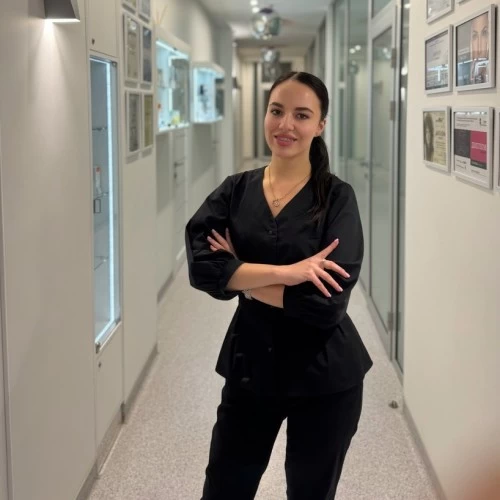Polylactic acid injection
An injection technique for skin tightening, addressing sagging and laxity, capable of restoring youthfulness to aging skin. Polylactic acid is more effective than other injectable rejuvenation methods, providing a lifting effect and has been successfully used in contouring for over two decades.
What is Polylactic Acid?
Polylactic acid is produced synthetically to create a substance that stimulates collagen formation and is safe for humans. Why is it so popular? Polylactic acid is a resorbable polymer, identical to an acid naturally produced by our bodies, with numerous beneficial effects. This is why it’s actively used by cosmetologists. It belongs to fruit acids, or alpha hydroxy acids.
Compatible with our tissues, polylactic acid-containing products do not trigger allergic reactions, are not rejected, do not accumulate, and are easily eliminated by the body's drainage systems as water and carbon dioxide. This makes it ideal for fillers and threads, popular anti-aging treatments in aesthetic medicine.
How Polylactic Acid Differs from Other Fillers
A unique feature of polylactic acid is its ability to stimulate hyaluronic acid production and activate renewal mechanisms, defining its application areas.
The main goal of this procedure is to increase the intercellular matrix volume, significantly contour the face, reduce wrinkles, diminish dark circles, eliminate signs of fatigue, and restore facial firmness. Say goodbye to wrinkles and sagging!
Rejuvenating Effect of the Sculptra Filler
Once injected, polylactic acid in the skin initiates a series of rejuvenating reactions. Fibroblasts, the primary builders of the skin’s support structure, begin to actively synthesize collagen, elastin fibers, and hyaluronic acid.
Two weeks after the filler injection, its liquid component dissipates, and the space is filled by collagen fibers that surround the polylactic acid particles. Over time, it exits the body, leaving behind a firm framework.
After these injections, the skin surface becomes smoother, appearance and texture improve, and tone increases, giving the skin a healthy, vibrant color. Imperfections become less noticeable.
The effect intensifies over six months and then remains stable for an average of up to two years.
How is Polylactic Acid Injected?
Before injection, the doctor reconstitutes dry polylactic acid, making it suitable for injection. This must be done in advance, so planning the procedure is essential. Failing to properly prepare the solution can result in incomplete dissolution of particles, affecting procedure safety.
Then, depending on the injection area, the product is administered into the deeper skin layers with a needle or cannula. The procedure is painless and doesn’t require anesthesia, as an anesthetic is used when dissolving the product.


